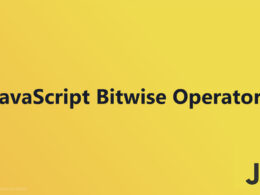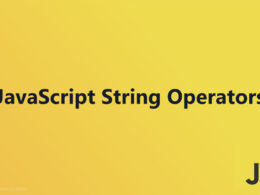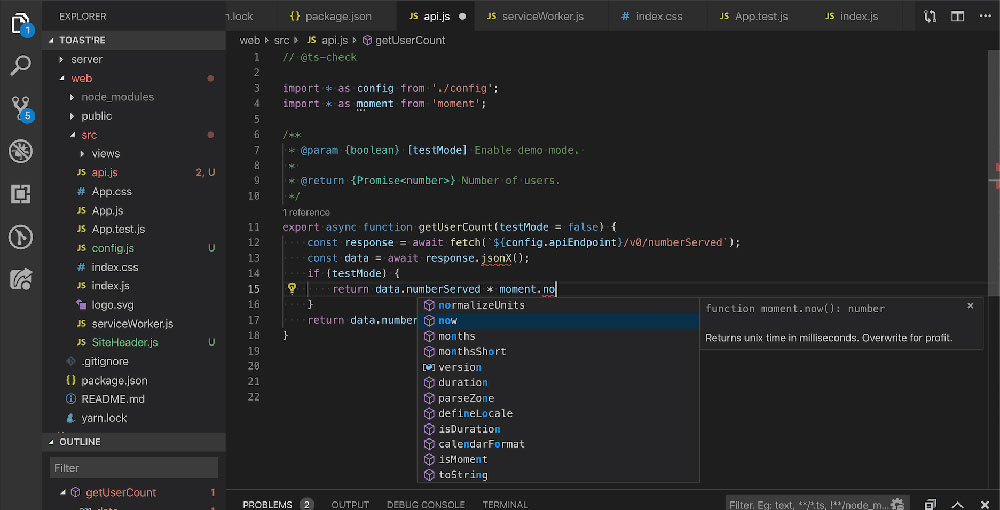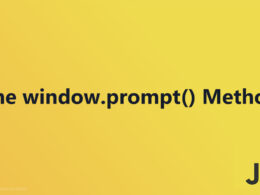Understanding JavaScript Loops: A Beginner’s Guide
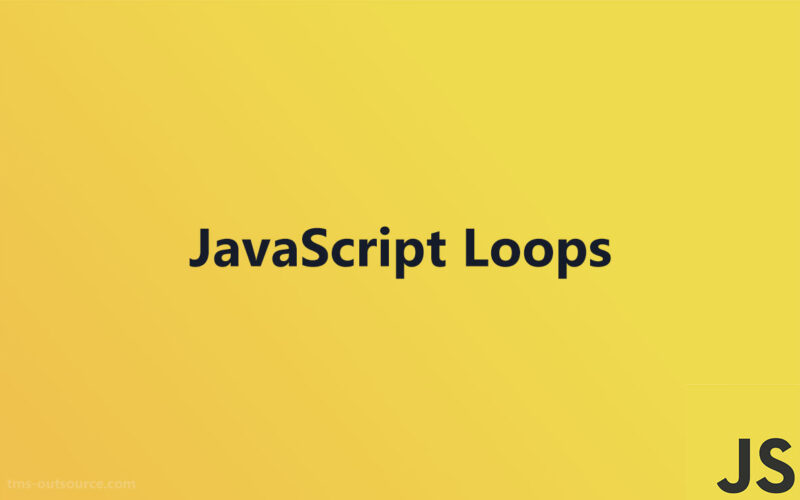
Mastering JavaScript loops is a fundamental skill for any developer looking to enhance their web applications.
This article dives deep into the different types of loops—like for, while, and for-of—and explains their uses in scripting efficient and effective code.
Whether you’re a beginner or looking to refine your skills with more advanced techniques, this guide will provide valuable insights and practical examples.
Types of JavaScript Loops
The For Loop
When coding with JavaScript, the for loop is essential for performing repetitive tasks.
The basic syntax initializes a counter, sets a condition, and specifies how the counter should change after each iteration. Here’s a simple example:
for (let i = 0; i < 10; i++) {
console.log(i);
}
This loop will print numbers from 0 to 9. In terms of use cases, for loops are perfect for iterative operations where the number of iterations is known beforehand, like looping through array elements or executing a block of code a specific number of times.
The While Loop
The while loop, different from the for loop, continues to run as long as its condition remains true.
It’s particularly useful in scenarios when you don’t know in advance how many times you’ll need to iterate. Here’s the basic structure:
let i = 0;
while (i < 5) {
console.log(i);
i++;
}
This loop will also print numbers from 0 to 4.
While loops are best suited for situations where the termination condition is dependent on something other than a straightforward counter, such as ending the loop based on user input or a change in data fetched from an API.
The Do-While Loop
The do-while loop is similar to the while loop, but with a key distinction: it always executes its body at least once because the condition is evaluated after the loop’s body executes.
Here’s how it looks:
let i = 0;
do {
console.log(i);
i++;
} while (i < 5);
This loop, again, will print numbers 0 to 4.
A practical use of a do-while loop might involve prompting a user for input and validating that input; the loop will run at least once, displaying the prompt, then continue if the input is not valid.
The For-In Loop
The for-in loop is designed to loop through the properties of an object.
It provides a straightforward way to inspect each property in turn:
const person = {firstName: "John", lastName: "Doe", age: 30};
for (let key in person) {
console.log(key + ": " + person[key]);
}
This will print each property key and value of the person object. However, it’s essential to be aware of some common pitfalls like iterating over properties that are inherited through the prototype chain.
To bypass these, you should check if the property belongs to the object directly using hasOwnProperty() method.
The For-Of Loop
Introduced in ES6, the for-of loop simplifies the process of iterating over iterable objects such as Arrays, Strings, Maps, NodeLists, and more. For example:
let colors = ['red', 'green', 'blue'];
for (let color of colors) {
console.log(color);
}
This will print “red,” “green,” and “blue.” Comparing it to for-in loops that are better for iterating over keys in an object, for-of loops are more suitable for arrays and other iterable objects.
Unlike traditional for loops, the for-of loop handles the values directly, not just the counter or key, providing a cleaner and more efficient way to obtain values from arrays especially.
Advanced Loop Concepts and Techniques
Nested Loops
Nested loops occur when one loop runs inside another. The inner loop completes all of its iterations before the outer loop finishes one iteration.
This concept is particularly useful for dealing with multi-dimensional data structures.
Here’s a basic example, showing how to use nested loops to iterate over a two-dimensional array, which could represent a grid or matrix:
let matrix = [
[1, 2, 3],
[4, 5, 6],
[7, 8, 9]
];
for (let i = 0; i < matrix.length; i++) {
for (let j = 0; j < matrix[i].length; j++) {
console.log(matrix[i][j]);
}
}
This outputs each number in the matrix.
Nested loops are common in applications such as creating dynamic interfaces, processing spreadsheet data, or developing games.
Loop Control Statements
Loop control statements modify the execution from its normal sequence.
When executed, they can change the flow of control by halting the execution of the loop (break) or skipping the current iteration (continue).
The ‘break’ statement
The purpose of the ‘break’ statement is to exit from the loop immediately, disregarding whether the loop would naturally proceed.
It’s highly effective in scenarios where you need to stop the loop upon meeting a specific condition. For example:
for (let i = 0; i < 10; i++) {
if (i === 5) break; // Stops the loop when i is 5
console.log(i);
}
This code will print numbers from 0 to 4. Once i equals 5, the loop terminates.
The ‘continue’ statement
Distinguishing from ‘break’, the ‘continue’ statement skips the current loop iteration and proceeds with the next iteration.
It’s useful when you want to skip specific elements without terminating the loop. Here’s how it works:
for (let i = 0; i < 10; i++) {
if (i === 5) continue; // Skips the current iteration when i is 5
console.log(i);
}
This example prints all numbers from 0 to 9 except for 5. Using ‘continue’ allows the loop to bypass just the undesirable instance and not halt the entire looping process.
Each control statement significantly impacts how javascript loops operate by directly controlling the flow of execution within the loop.
These techniques are handy when managing the execution flow more precisely is needed, especially when dealing with more complex data manipulations or conditions.
Best Practices for Using Loops
Performance Implications
When coding with javascript loops, it’s crucial to keep your code efficient to prevent slowing down your scripts, especially when working with large datasets or complex algorithms.
Minimizing overhead in loops can be achieved by limiting the scope of what the loop processes, ensuring that each iteration is as lightweight as possible.
Here’s an effective approach: always keep calculations or function calls outside the loop if the result does not depend on the loop iterations. For instance:
const length = someArray.length; // Avoid accessing length property on each iteration
for (let i = 0; i < length; i++) {
// Loop content
}
Also, consider leveraging more efficient looping methods when dealing with arrays, such as using map(), filter(), or reduce() if suitable, as these can sometimes replace traditional loops with more optimized, cleaner approaches that are easier for JavaScript engines to optimize.
Readability and Maintainability
Writing clean and understandable loops is not just about aesthetics; it’s vital for maintaining code in the long term, especially when other developers might need to read or modify your code.
Using descriptive variable names and keeping your loops simple and decomposed can help significantly.
For example, rather than nesting several levels of loops, you might find ways to refactor nested loops into separate functions or methods. Here’s a quick illustration:
// Before refactoring
for (let i = 0; i < data.length; i++) {
for (let j = 0; j < data[i].items.length; j++) {
console.log(data[i].items[j]);
}
}
// After refactoring
function processItems(items) {
items.forEach(item => console.log(item));
}
data.forEach(record => processItems(record.items));
This not only makes the loops more readable but also modularizes parts of the code for reuse elsewhere.
Last but not least, knowing when to avoid loops is as important as using them effectively.
If you find yourself using loops to solve every problem, it might be time to explore JavaScript’s built-in methods or functional programming paradigms that can often lead to more straightforward and efficient solutions, especially for data transformation tasks.
Common Mistakes and Error Handling
Infinite Loops
One of the most common pitfalls when working with javascript loops is accidentally creating an infinite loop.
Infinite loops occur when the terminating condition of the loop is never met, causing the loop to run indefinitely and potentially crashing the browser or application.
Identifying infinite loops usually involves understanding and tracing your loop’s logic to ensure the terminating condition can actually be met.
For instance, if you increment the wrong variable in a loop’s condition, it might never reach the termination point:
// Incorrect increment leading to infinite loop
for (let i = 0; i < 10; ) {
console.log(i);
}
Here, i is never incremented, causing an infinite loop. Always ensure your loop variables change correctly within each iteration.
Debugging loops effectively often means adding console logs or breakpoints to inspect how variables involved in conditions change after each iteration.
If loops are complex, simplify them or break them down into smaller, more manageable chunks for easier debugging.
Improper Use of Loop Indexes
Improper use of loop indexes often leads to errors like accessing undefined elements of an array or off-by-one errors.
The most typical indexing error is mismanaging the start and end points:
// Off-by-one error: trying to access an undefined element
let arr = [0, 1, 2, 3];
for (let i = 0; i <= arr.length; i++) {
console.log(arr[i]);
}
In the above example, the loop tries to access arr[4], which does not exist, causing an undefined output or possible error.
To manipulate indexes correctly:
- Always begin indexing from 0, since JavaScript arrays are zero-indexed.
- Use
< lengthfor the end condition in loops to prevent out-of-bound errors. - Be cautious with modifications inside the loop that might affect the index variable or array structure, potentially leading to unexpected results.
Practical Examples and Exercises
Simple Exercises for Beginners
When starting with JavaScript, practicing basic loop constructs is key. Here are a few exercises that new programmers might find helpful:
- Counting: Write a for loop that prints numbers from 1 to 10.
- Simple Array Iteration: Use a
forEachloop to iterate over an array containing your favorite book titles and print each one. - Interactive Coding Challenges: Websites like Codecademy or FreeCodeCamp offer interactive challenges that require solving problems using loops, providing real-time feedback and solidifying your understanding of loop mechanisms.
These exercises help familiarize beginners with the syntax and basic operation of javascript loops, enhancing both their confidence and competence in using them effectively.
Intermediate Projects
Once comfortable with the basics, engaging with intermediate projects can further develop your skills. Here are a few ideas:
- Creating Dynamic Interfaces: Use a for loop to dynamically generate a grid of elements on a webpage. Each element could represent data points or interactive components.
- Data Manipulation and Processing Tasks: Write a script to process data from JSON files using loops. Tasks can include filtering out incomplete data entries, calculating averages, or mapping data to a new format.
These projects integrate loops with real-world tasks, giving more context on how JavaScript loops are used in web development.
Advanced Techniques
For those who have mastered the basics and are looking for more challenging applications of loops:
- Optimizing Existing Loop Structures: Review and refactor existing code where loops are used. Focus on improving performance by reducing the complexity and avoiding redundant operations.
- Integrating loops with other JavaScript features: Combine loops with event-driven programming and asynchronous code to solve complex problems. An example could be setting up a loop that triggers a specific function based on user actions or network responses.
Applying these advanced techniques not only deepens your understanding but also enhances the functionality and efficiency of your code.
FAQ On JavaScript Loops
What exactly is a JavaScript loop?
A JavaScript loop is a feature in programming that allows the execution of a block of code repeatedly, based on a condition. These loops are incredibly helpful for automating repetitive tasks within your code. They are especially useful when handling arrays or objects where each element requires similar treatment.
How do you stop a JavaScript loop?
To halt a JavaScript loop, the break statement is used. Inserting this statement within the loop body will immediately terminate the loop, letting the execution continue with the next line of code after the loop structure. It’s perfect for exiting early if a specific condition is met.
What distinguishes a for loop from a while loop in JavaScript?
The fundamental distinction lies in when you use them: for loops are ideal when the number of iterations is known before entering the loop. While loops, however, are suited for situations where the termination depends on a condition that isn’t tied to a counter.
Can JavaScript loops handle asynchronous operations?
Handling asynchronous operations in standard JavaScript loops like for or while can be tricky because these loops don’t pause for asynchronous code to complete.
To manage asynchronous tasks, consider using modern features like async/await with for…of loops or array methods like forEach that support asynchronous callbacks.
What is a forEach loop in JavaScript?
The forEach method in JavaScript allows for executing a function on each item in an array. Technically not a loop, this method simplifies operations on array data, enforcing function execution for each element without the need for a manual index tracking and exit condition as seen in traditional loops.
How do you iterate over an object with a loop in JavaScript?
To iterate through each property of an object, the for-in loop is typically used. This loop traverses all enumerable properties of an object, making it a handy tool for tasks where object properties need individual operations. Remember to always check for the object’s own properties to avoid prototypes’ interference.
What are nested loops in JavaScript?
Nested loops mean placing one loop inside another. This setup is common when working with multi-dimensional arrays or when you need a combination of elements from different arrays. Execution starts with the outer loop and then enters the inner one, forming a matrix-like iteration cycle.
How do you ensure loops don’t reduce JavaScript performance?
To boost performance, keep your loops lean by minimizing logic inside them and avoiding heavy computations or DOM manipulation within loop bodies.
Additionally, consider leveraging more efficient data processing methods such as map(), filter(), or even moving intense operations outside the loop when possible.
Why might a loop run unexpectedly in JavaScript?
Unexpected loop execution can often result from errors in setting loop conditions or updating loop variables incorrectly. Infinite loops or loops that terminate prematurely are common issues.
Always double-check your logic, and possibly log values step-by-step to identify what’s keeping the loop running or stopping it unexpectedly.
Is there a way to bypass certain iterations in a JavaScript loop?
Certainly, the continue statement allows skipping an iteration in various loop types if a specified condition occurs.
Upon encountering continue, the loop halts the current cycle and proceeds to the next iteration, effectively bypassing any code below the continue within the loop body for that pass.
Conclusion
Throughout this exploration of JavaScript loops, we’ve delved deeply into their various types, from the basic for loop to the more nuanced for-of loop.
We’ve also covered best practices and common pitfalls to help refine your approach to scripting. JavaScript loops are indispensable tools in a developer’s toolkit, enhancing tasks from simple array iteration to complex data manipulation.
By understanding and applying these loop constructs effectively, you’ll not only streamline your coding process but also open up a world of possibilities for creating dynamic and efficient web applications. Remember, the key is practice and continual learning!
If you liked this article about JavaScript loops, you should check out this article about JavaScript Events.
There are also similar articles discussing external JavaScript, JavaScript For Loop, JavaScript While Loop, and JavaScript for-in Loop.
And let’s not forget about articles on JavaScript For Of, JavaScript do…while Loop, javascript foreach loop, and JavaScript Versions.
- Essentials of JavaScript Functions for Beginners - June 22, 2024
- Exclusive Hip-Hop Mixes: Music Apps Like Datpiff - June 21, 2024
- Revolutionizing Software Testing: How AI is Transforming Quality Assurance - June 21, 2024





